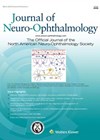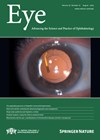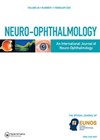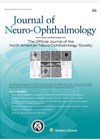
Journal Reviews
A review of neuro and retinal imaging findings in Alzheimer’s disease
The authors present a systematic review with the aim of assessing the relationship between retinal and cerebral changes in Alzheimer’s disease (AD), mild cognitive impairment and pre-clinical AD. A total of 23 articles met the inclusion criteria of the review,...
A review of the risk of nonarteritic anterior ischaemic optic neuropathy post-cataract surgery
A systematic review and meta-analysis are presented with the aim of assessing whether cataract surgery increases the risk of non-arteritic anterior ischaemic optic neuropathy (NAION) and identify potential predictors of risk. The search strategy components are outlined in detail. A...
The expanding spectrum of idiopathic intracranial hypertension
This is a review article from a tertiary centre in Atlanta, US. With rising obesity rates and increasing access for MRI scans there has been a large increase in patients requiring an urgent papilloedema check with incidental findings on MRI...
Does methanol poisoning require ophthalmic investigation?
The authors report a case series of 21 patients (41 eyes) diagnosed with acute methanol poisoning following an outbreak in Tunisia in 2020. All patients underwent a complete ophthalmological examination including visual fields, colour vision test and optical coherence tomography...
Visual snow syndrome: a review
Visual snow syndrome (VSS) is a neurological condition characterised by visual phenomena described as dots moving across the visual field. Other visual symptoms can take the form of palinopsia, entopic phenomena, photophobia and nyctalopia. Tinnitus and migraine can be commonly...
How common are ocular motor cranial nerve palsies following TBI?
This retrospective cohort study aimed to report the incidence of ocular cranial nerve palsy as a result of traumatic brain injury (TBI). Patients were identified using an insurance database using codes from the International Classification of Disease 9th and 10th...
Should we be looking for anemia in the presence of papilloedema?
The authors present a retrospective case notes review of patients diagnosed with idiopathic intracranial hypertension (IIH) presenting to a tertiary neuro-ophthalmology clinic over a 32-month period. The IIH group were age and sex matched with other patients attending the clinic...
Aquaporin-4 antibody testing in isolate optic neuritis
The authors present a retrospective case review of first presentation isolated cases of optic neuritis tested for aquaporin-4 antibody across two centres over a nine-year period. Exclusion criteria included known diagnosis or other manifestations of neuromyelitis optica spectrum disorder. Two...
Case reports of neuro-visual consequences of mild COVID-19 in children
Neuro-visual involvement has been reported in numerous patients with severe SARS-CoV-2 disease, mainly among adult patients. In children, such involvement has been reported in rare cases, often in those presenting with severe forms of COVID-19. The aim of this work...
Using a tumour registry to investigate optic nerve gliomas
This study is a retrospective comparative analysis. Patients with optic nerve glioma and pilocytic astrocytoma were identified through the Surveillance, Epidemiology and End Results (SEER) cancer registry covering a 42-year period using standardised codes. The following data was extracted: basic...
Assessing possibility of deferring lumbar puncture in mild idiopathic intracranial hypertension
This was a retrospective review of patients consecutively presenting with idiopathic intracranial hypertension (IIH) to a tertiary neuro-ophthalmology clinic without a lumbar puncture (LP) over an eight-year period. Inclusion criteria included true optic disc oedema, retinal nerve layer thickness ≤300µm,...
Higher risk of poor functional outcome in the presence of visual deficits post-stroke
The authors present a retrospective case review with the aim of reporting the disability outcomes of individuals 90-days post stroke with and without visual deficits. The Houston Methodist Hospital Outcomes-based Prospective Endpoints in Stroke (HOPES) Registry was used as the...








